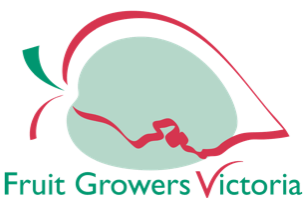
When selecting stock, consider the area that they are going into and the footprint that you have for the hedge. There are a number of low space required plants that grow tall and narrow that will provide excellent screening without taking up a big space at ground level. Look at colour, form and density.
If it is a dark area try and go with bright foliage. This will reflect light and give a happier result. Pick a variety with reflective shiny foliage as these are preferable to dull leaf finishes particularly in a dark spot.
When deciding the number of plants to use, the first thing to decide is the height you require, followed by tree colour, then foot print or space available.
A general rule of thumb
As a general rule of thumb you can use a ratio of 3 high x 1 apart. For instance, if you want the hedge to reach 4 metres tall, plant material 1.3 metres apart. If you want the hedge 1 metre high, plant material 33cm apart.
But know the species you are using
For best results, it is best to know the natural width of the tree material you are using. For example, the width of a mature Syzygium australe ‘Pinnacle’ is 1 metre maximum, so if you want a 4 metre tall hedge using Syzygium ‘Pinnacle’ you will need to plant material no more than 1 metre apart as that is as wide as they grow!
Nutrition
Nutrition for hedges is really important because we trim these trees often to keep their shape. Trimming removes energy from the plant so good nutrition gives them the drive to put on new growth as regularly as we remove it. However we don’t want them to grow too quickly once they are established, otherwise they can become a lot of work. We suggest using a planting mix at the establishment stage like our Complete Tree Starter, but then move to a more basic organic fertilizer after that. We fertilize at half the suggested rates for hedges and one of the balanced general purpose fertilizers will do the job adequately.
Watering
Watering is also important particularly when getting hedges established. Even watering during this period will result in a fuller hedge in a quicker timeframe. Once established though, we suggest keeping the hedge a little on the dry side as this will slow the growth rate a little and result in less maintenance.
Trimming
So your hedge is fed and watered; now we must keep it in shape with regular trimming. Even as they are growing, trimming is very important to ensure a thick and even result. Probably the biggest mistake people make when trimming a hedge is the angle they adopt when the trimming is done. A hedge is a living wall not a brick wall; it needs to breathe, and feel the rain and light on the leaf surface. So to achieve density of growth all the way to the ground, cut the hedge at a slight angle so that the bottom of the hedge is wider (or takes up slightly more space) than the top of the hedge. What you are doing is allowing the sun to reach the foliage at the bottom. You don’t want to put all this work into establishing your hedge to find that it is thick and green at the top but thin and sparse at the bottom due to the top of your hedge shading the bottom of your hedge. This trimming angle is not severe; you will not notice that your neatly cropped specimen is slightly fatter at the bottom, but your hedge will reward you with healthy, thick, and consistently dense foliage all the way to the ground.
Cutting hedges with sharp hedge trimmers is fine but always just go back and take any extra woody bits or rough cuts out with a sharp pair of secateurs.
Happy hedging! Enjoy your living wall.
Receive all the latest news, product information, collections, projects, tips and special offers straight to your inbox each month or so.
Receive all the latest news, product information, collections, projects, tips and special offers straight to your inbox each month or so.
Treefinder can help you identify the perfect tree for your next project!
With over 400 tree varieties for review, the Treefinder app enables you to conveniently browse and compile a list of trees suitable for a number of common landscaping uses - from attracting birds to creating a formal screen or hedge. By selecting desired size, foliage, and a few categories, Treefinder opens up a world of possibilities.
Once you've found the perfect tree you can click through to our website for more information, availability and a quote.

We are specialists in the environmentally sustainable production of premium quality advanced landscaping trees and screens.
For more than 47 years Speciality Trees has been a leader in the production and supply of advanced environmentally sustainable, containerised landscape trees for local government, the landscaping industry and retailers.
Learn more







